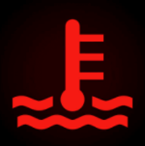Novice drivers and new car owners have been urged to get to grips with the different types of dashboard warning lights to stay safe and avoid hefty repair bills.
Motoring experts from LeaseCar.uk have revealed seven common warning lights that should be recognised and dealt with as soon as possible, to prevent any mechanical problems worsening.
If vehicle-owners ignore warning lights a simple problem can quickly become something much more dangerous – and costly.
Problems can include a faulty battery, a misfire in the engine or potential leaks in the coolant system, all of which could end in danger if not quickly seen too.
A spokesperson for LeaseCar.uk said: “There are so many warning lights, each with their own different meaning, making it easy to get confused.
“However, these lights are there for a reason, and it’s to ensure that vehicles stay road-worthy and safe.
“If a warning light does flash up it’s important to look into what it means and how it can be rectified quickly and safely.”
This is LeaseCar.uk’s guide to vehicle warning lights:
- Airbag warning light

It’s important to get a faulty airbag looked at as soon as possible as it may not release and protect drivers and passengers during a crash otherwise. A faulty airbag also runs the risk of go off at any time causing shock, injury or blocking the drivers view.
- Battery light

It’s normal for this light to come on when you turn on your car but if it doesn’t go out after a few seconds then there may be a fault with the electrical system – this could cause you to come to an abrupt stop if the battery isn’t working properly.
It’s best to get it checked out at the nearest garage as it could be a faulty battery, or could be due to the alternator drive belt braking.
- ESP Light

This is known as either the Electronic Stability Light or Traction Control Light and means that your car is losing traction.
This light will pop up during snow and rain as these are slippery conditions. Never accelerate hard in these conditions, it’s better to ease off altogether to keep control of the vehicle.
- Engine Light

The engine light can come on for a number of reasons, it can be due to a faulty electrical sensor, a misfire, or something else that will change how your engine normally works. Take your vehicle to a mechanic to get it checked over and don’t continue driving it as it could cause more damage
- Diesel particulate filter

This nifty piece of kit removes soot from the exhaust helping reduce emissions. If it’s faulty it means you’re releasing lots of harmful gasses into the atmosphere – potentially along with a cloud of black smoke – and could cause damage to the engine.
- Tyre pressure monitor

If this warning lights up it means you could have a potential puncture. The monitor knows how the tyres normally feel, and if there is a change in this, it triggers the light. Checking your tyres straight away could stop a potential puncture.
- Coolant

This warning means coolant levels are running low and if this happens it could make the whole engine overheat. There could be a potential leak somewhere in the system or a head gasket failure could be using up all the coolant.
